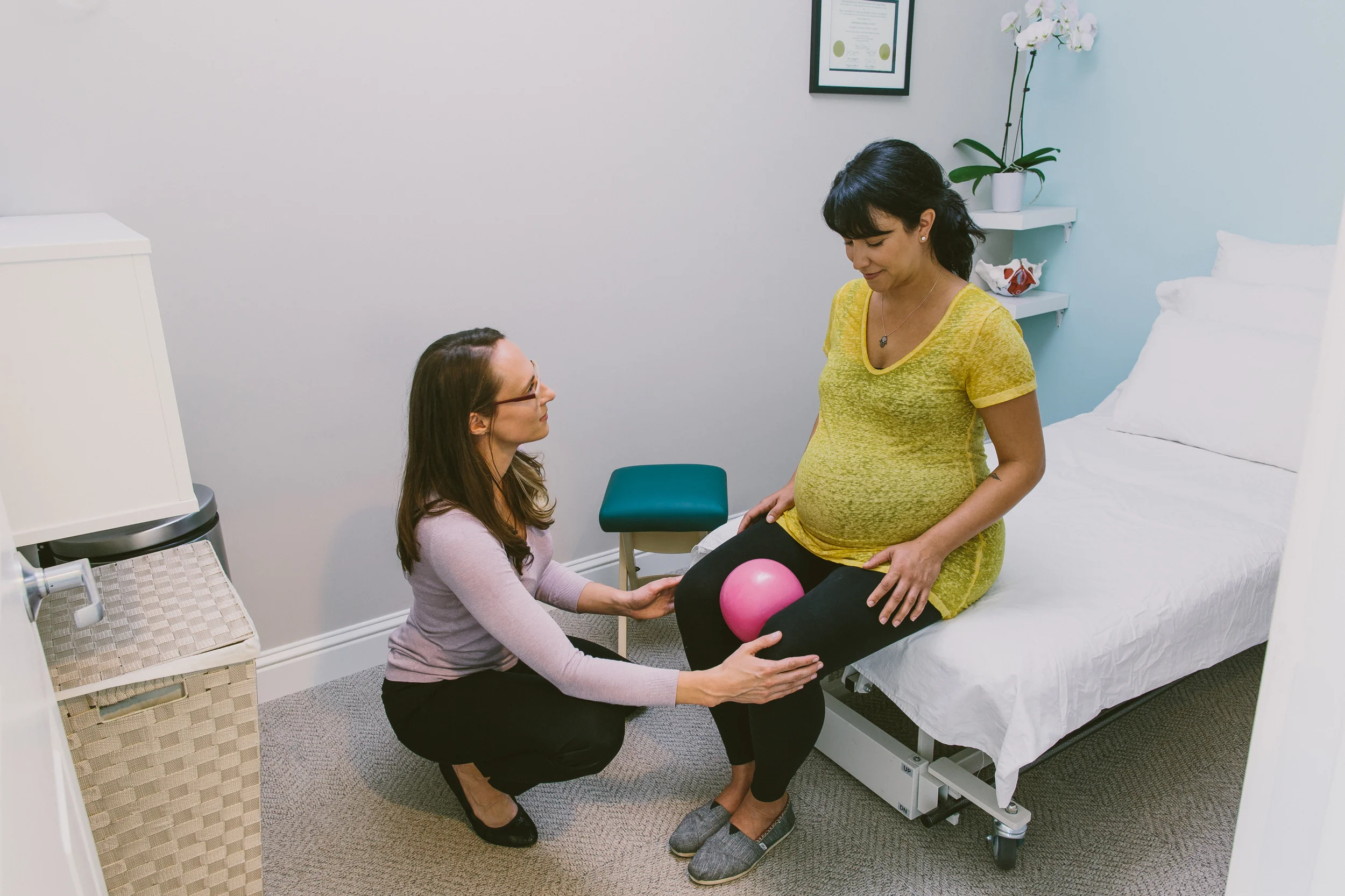In our daily work with expecting mamas, we are constantly reminded that pregnancy is a time of information overload. Advice comes from all directions - family, friends, doctors, midwives, doulas, class instructors, books, magazines and the internet - and many women and their partners simply don't know how to make sense of it all.
As pelvic floor physical therapists, we frequently discuss concerns brought to us by our pregnant patients about the safety and efficacy of pelvic floor muscle exercise during pregnancy. With the volume and diversity of information available on this topic, it's easy to see why a lot of women are paralyzed by fear of doing the "wrong" thing.
So what's a mama to do? Our answer, ultimately, is the same that we would provide to any woman who comes to us with signs of pelvic floor dysfunction. It depends.
Generalizing exercise prescription for any population of people, pregnant or not, will never completely address the needs of any one of those individuals, and may prevent many from getting relief from their symptoms. The state of pregnancy creates common features among many women, but each enters her pregnancy with a unique physical, gynecological and psychosocial history that must be determined by a thorough history and physical examination before any conclusions about the most appropriate type of pelvic floor exercise can be made.
The most important "rule" about pelvic floor muscle exercise is that it should work to cultivate a strong, flexible and coordinated muscle group. Our best physical function occurs when our pelvic floor muscles can achieve a full range of motion during voluntary contractions and relaxations, respond appropriately to postural demands as a component of the deep core, provide stability and force closure to the pelvic girdle and lumbar spine, and adequately support pelvic organs against intra-abdominal pressure.
During pregnancy, it is very important to practice relaxing into the sensation of pressure and stretch felt at the perineum (see our home page video about perineal massage!). But it's also important that pelvic floor muscles can contract strongly and with good endurance to provide needed stability for the pelvic bones and give support to a growing uterus and pelvic organs (including the bladder). As with all things in life, moderation of all of these factors is the key.
The path to to get to this ideal state depends entirely on where our muscles begin - some individuals will need to work primarily on motor control and coordination, some will need to practice voluntary contractions, and others will need to focus on voluntary relaxation. The reason that our jobs stay so interesting is that every body is unique - so let's treat them that way!
